Top Photo: Male eastern tiger swallowtail.
The flowers in the photo are black-eyed Susan. But, notice where the arrow points. It’s pointing at what appears to be debris on the disc of one of the flowers.
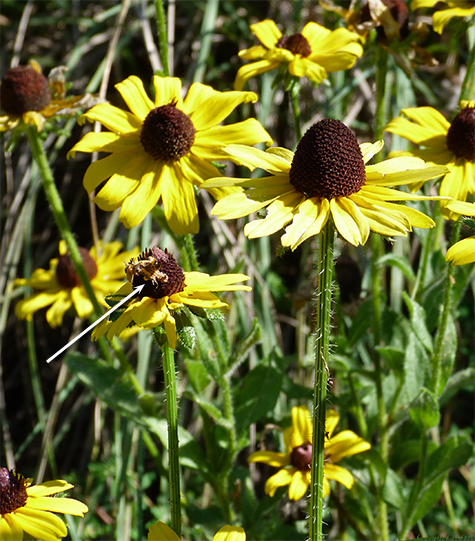
The debris is actually a caterpillar, a camouflaged looper, the larva of a small moth.
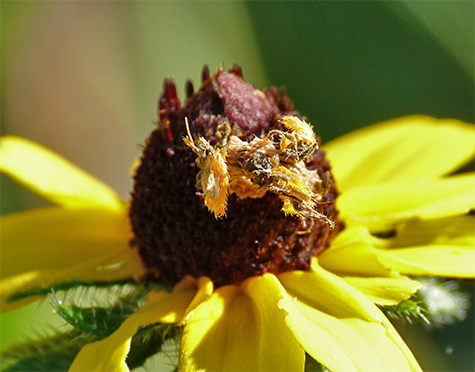
Still doesn’t look like a caterpillar?
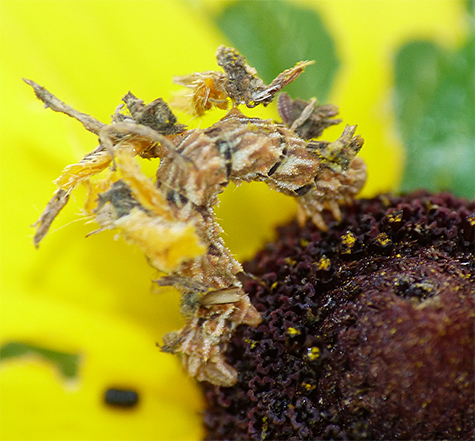
These small caterpillars attach flower and plant parts to themselves in order to disappear into the flower. In truth, I’m not sure whether the caterpillar is a Wavy-lined emerald (Synchlora aerata) or Southern emerald moth (Synchlora frondaria). They’re similar, and both have been seen in the area. But, I’m leaning towards wavy-lined since they’re more northern in distribution that southern emerald.
Both are in the same genus (Synchlora) and belong to a group of small moths whose color as adults is green, hence the name “emerald.” The genus name Synchlora means green, or with green.
Although supposedly camouflaged, the caterpillars are rather easy to find on black-eyed Susan, if you know what to look for. Now that you do know what to look for, you should be able to find them too!
Another moth I came across this past week belongs to a group of moths known as tiger moths. When I first saw the moth sitting atop the grass in Catch the Wind, I was struck by its resemblance to a kind of medieval shield, a tiny medieval shield, of the Templar or Crusades type.
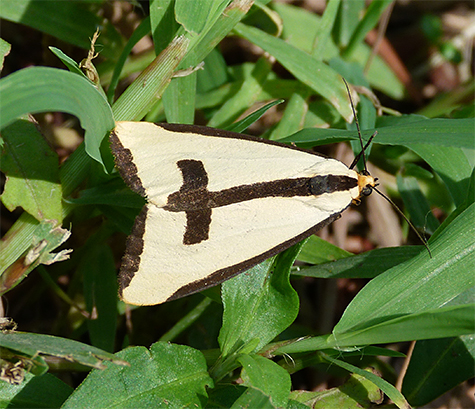
The moth was a Clymene moth (Haploa clymene). Haploa, the genus name, means “simple.” Clymene refers to either a Greek Titan Goddess “wife of the Titan Iapetos, mother of the Titanes Prometheus and Atlas and the ancestress of all mankind.” or a Greek Nymph “…an Okeanid nymph loved by the sun-god Helios” who “bore him seven daughters, the Heliad nymphs, and a son named Phaeton.” I’m not sure which Clymene is referenced in the moth’s name.
Another tiger encountered this week was from the butterfly side of the Lepidopteran order of insects, an eastern tiger swallowtail (Papilio glaucus). In my experience, these large yellow and black butterflies are most often seen here in our area during April, and again in July-August.
The genus name Papilio means butterfly and glaucus means dull gray-green or blue. Tiger swallowtails, though, don’t appear gray, green or blue (except for the blue spots on the wings of females). The truth is, swallowtail butterflies were named after ancient Greek heros. Glaucus was a sea-god or merman. I assume the color reference is to that of the sea in which Glaucus lived. It must have been a turbulent sea, and not the clear cobalt of a calm pelagic sea or the turquoises and aquamarines of mellow, coral seas.
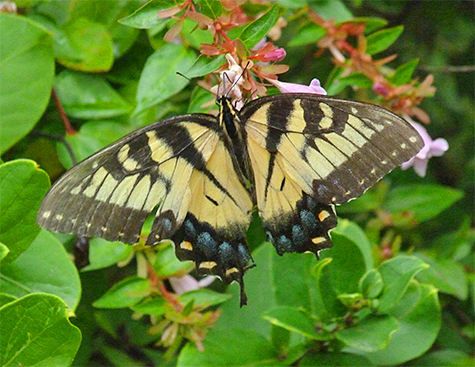
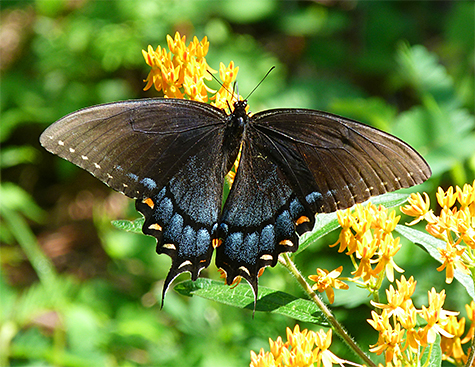
Yes, that’s right, both of the above butterflies are eastern tiger swallowtails, and both are females. The female tigers have two color morphs or forms. The further south one goes, the better chance one has of running into a dark morph female tiger swallowtail.
One theory as to why there are two color forms of the female is that the dark morph of the female eastern tiger swallowtail is supposedly a mimic of another large black butterfly, the pipevine swallowtail. Pipevines are said to be distasteful to predators, such as birds, because of the chemical makeup of their host plant, the plant that the caterpillars feed on, which is pipevine (much like the relationship between Monarch butterflies and milkweed). Pipevine swallowtails are less common the farther north you travel, so, as the theory goes, there are fewer dark morph female tiger swallowtails the farther north you go as well. Sounds good, but what about the males?
As you think about that question, and others that may have been formed in your mind while reading this post, go out and see if you can find these or other interesting creatures out in Explore the Wild, Catch the Wind, or on the Dino Trail.
Have fun!